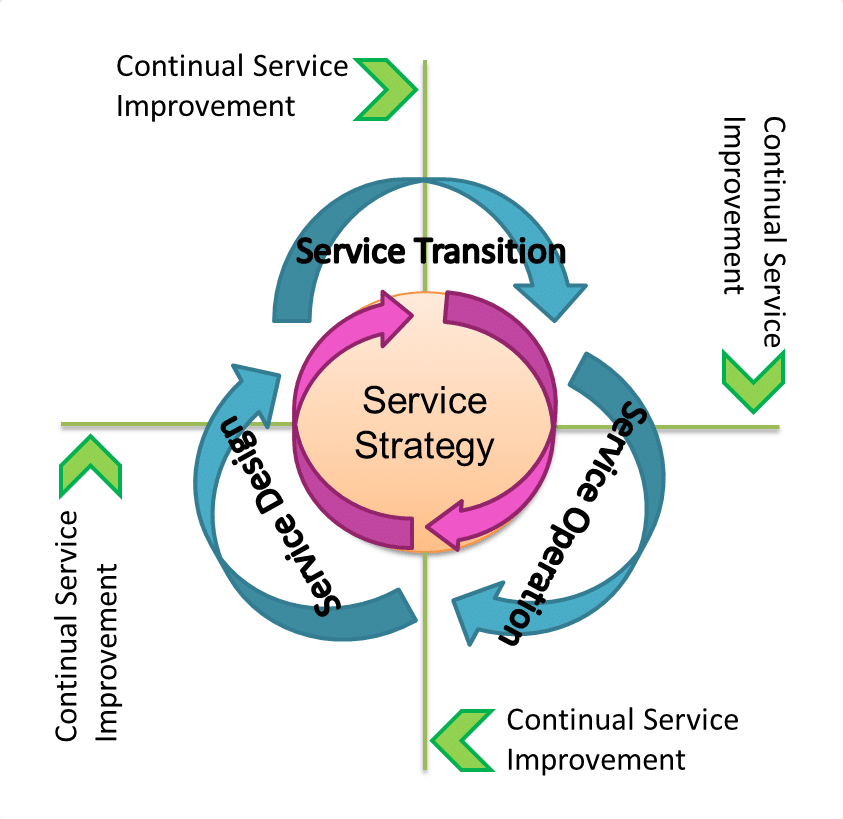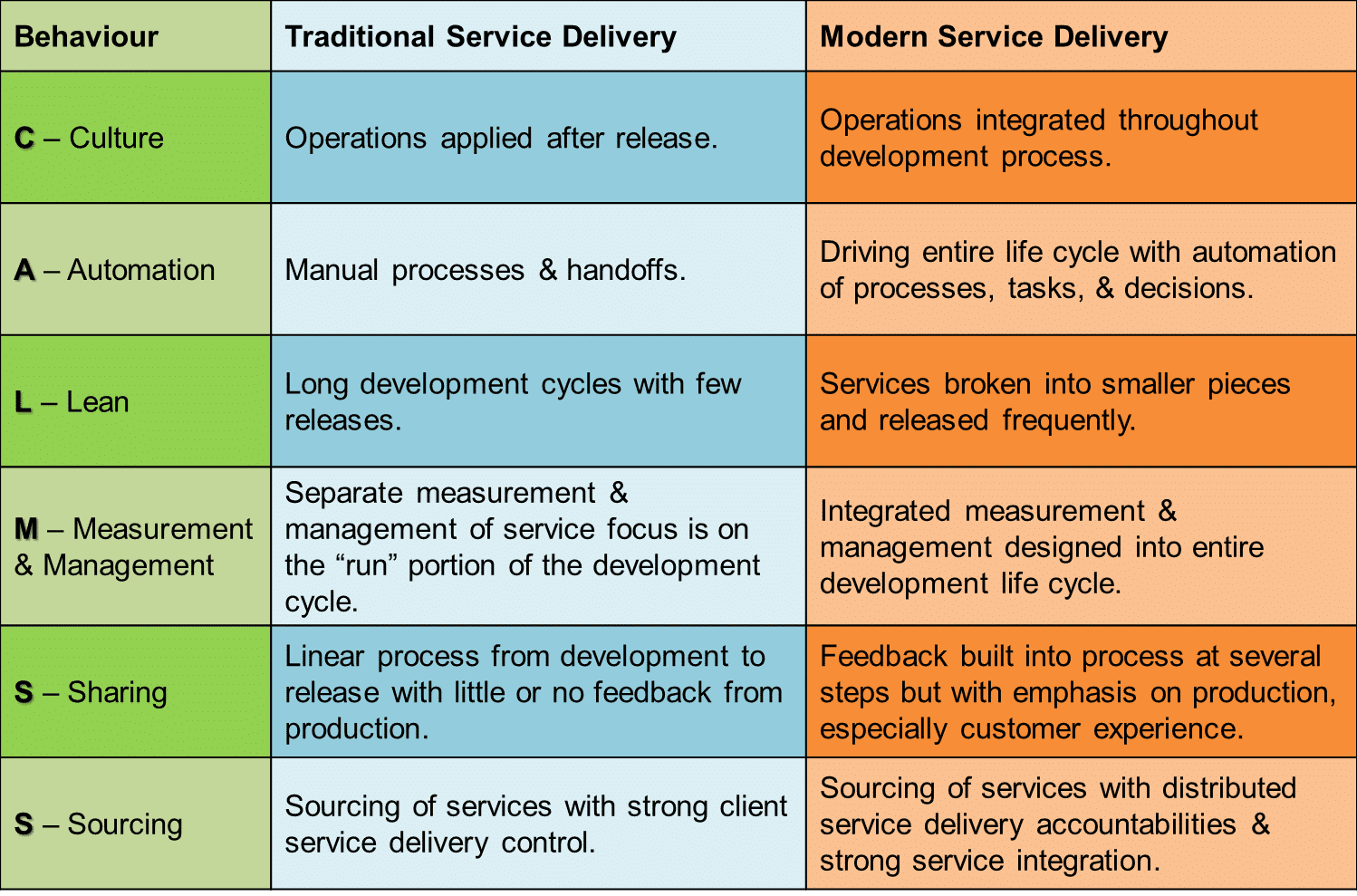What is Service Management?
Service management can be defined as: “a set of specialised organisational capabilities for providing value to customers in the form of services”. In this article we explain the general ITIL life cycle for service management and then we look at more modern concepts like building the underlying competencies that will enable service management.
In order to achieve the parameters set out by the definition, service management aims to complete four main objectives:
- To enable a service provider to understand the services they are offering.
- To ensure that the services provided produce the outcomes desired by their customers.
- To understand the value of these services to their customers.
- To understand and effectively manage the budget and risks related to those services.
By completing these objectives effectively, providers are able to deliver quality services to customers that meet their desired needs and provide value for them. In turn, customers will remain satisfied with the provider or organisation due to the facilitation of the achievement of their outcomes. Thus, service management becomes a strategic asset for the organisation.
The shift of service management to becoming a strategic asset also emphasises the broader view required for service management as a whole. Delivery of services must not remain the only, and main, concern of organisation with regards to service management. Rather, each service, process, and infrastructure component’s lifecycle must be considered from strategy to design and transition to operation to ensure continual improvement and effective service management.
The relationships between service strategy, design, transition, and operation and the service management lifecycle as outlined in the ITIL methodology are illustrated below.

Towards a Competency Model
In the past, maturity models have been the staple approach to measuring an organisation’s progress towards a desired end state with regards to service delivery. This approach becomes problematic, however, when organisations want to shift to modern service delivery (MSD) that is effective and assists in strategic operations, as mentioned previously. This is due to difference in desired end states for every organisation and is often considered a ‘moving target’. This causes problems within tech and IT organisations particularly because their ability to measure, understand, and improve their MSD is hindered. To combat this and ensure successful and effective MSD, IT and tech organisations must shift their sights onto competencies that will allow for a flexible release cadence rather than on maturity models that focus solely on an end result.
The DevOps movement has brought forward models such as CALMS to improve competency models and solve the shortcomings found in traditionally used maturity models. CALMS represents:
- Culture
- Automation
- Lean
- Measurement
- Sharing
Recently, even this has been modified to a lower level CALMSS in which management and measurement have been combined and sourcing has been added to make service delivery more flexible. Thus, the resulting model is:
- Culture
- Automation
- Lean
- Management & measurement
- Sharing
- Sourcing
Competency models can be defined as being: “the few common behaviours in an organisation that contribute most to its competitive advantage”. In order to achieve this, competency models must be:
- Short, intuitive, and inspirational.
- Part of everyday language.
- Applicable to everyone.
- Regularly updated.
Ensuring that the competency models remain within the boundaries set out above results in the use of competencies that are easy to understand, relatable to everyone, and flexible in their delivery approach. Thus, modern service delivery in maintained within the organisation that is effective and strategically beneficial and overall service management is improved.
The table below indicates the differences in traditional and modern service delivery when applying the CALMSS model rather than the traditional maturity model.

Conclusion
Successful service management relies on the organisation’s ability to shift its focus from mere service delivery to modern service delivery that utilises competency models such as CALMSS. Along with this, service management must focus on each service, process, and infrastructure component’s lifecycle from strategy to design and transition to operation to ensure continual improvement. By accomplishing these factors, service management becomes more effective and efficient in ensuring the delivery of services to the organisation’s customers that facilitate the outcomes they desire. Furthermore, this allows the organisation to manage the budget and risks associated with the services it provides, thus, benefiting the organisation and its resource/cost management greatly.
References
Cartlidge, A. et al., 2007. An Introductory Overview of ITIL® V3. United Kingdom: itSMF Ltd.
DeMartine, A., 2015. CALMSS: A Model For Assessing Modern Service Delivery. Cambridge: Forrester Research.
What is next
Previous Post |
Next post |
Risk Management |
Green IT |
For all our Modern IT Management Lectures.
For all our Podcasts.
If you feel you are stuck in your career try our Coaching for Corporate Athletes.
